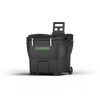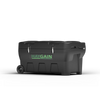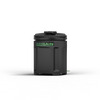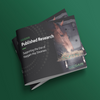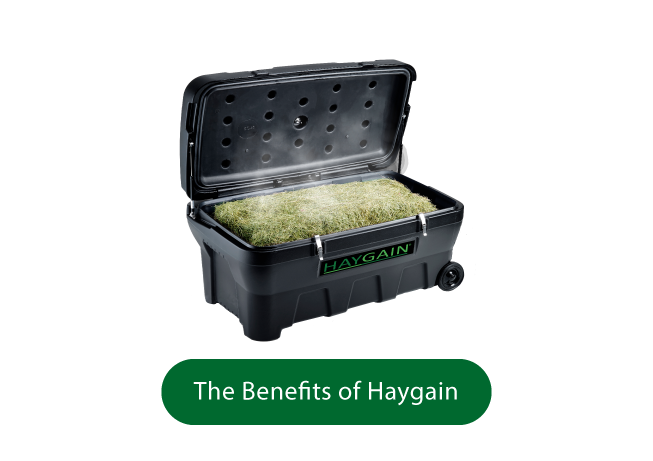Feeding Youngstock
With many gradings and futurities in the northern hemisphere breeding calendar now in full swing (albeit virtually), this provides an excellent opportunity to discuss the importance of a good start when feeding our youngstock.

Briony Witherow
Equine Nutritionist, 23/07/2020

The Keys to Success
• Where possible feed to the individual’s requirements and adjust based on regular assessment of body weight and condition.
• Maintain youngstock at a lean body condition (4 on a 9-point scale) where at all possible, while this may hinder some ambitions in the show arena or sales paddock, there is no doubt that a leaner physique provides benefit longer term.
• Take a forage first approach and base the ration on a foundation of good quality forage, this will help reduce the reliance on hard feed and help to avoid large meals and high starch rations.
• Feeding more does not result in ultimately bigger, stronger horses – a horse will only grow to his genetic potential. Overfeeding is more likely just to increase risk of developmental complications. Track growth and try and achieve a smooth and gradual growth rate that reduces the risk of developmental problems along the way.
• Further research is needed to provide guidelines for a breed-specific approach to feeding for growth (much of the current research based on thoroughbreds). For the moment, this leaves a heavier reliance on regular monitoring and adjustment of rations through good management practices.

For the first three months of life our foal’s nutrient provision is reliant principally on the mare, interference only resorted to if this doesn’t prove sufficient. From three months of age his feeding horizons begin to widen, exploration of his environment and different food types helping to develop and mature his digestive system. By four months of age he is able to derive nutrients from a range of feedstuffs and reliance on the mare starts to wane. Carefully managing his environment and ensuring exposure to only high-quality feedstuffs as he investigates new foods is essential, particularly when it comes to forage. For this reason, steamed forage can be an excellent fit for both the mare and foal, both reducing exposure to dust and rewarding his inquisitive nature from the very beginning.
Key to the success of weaning is preparation. It is well documented that post weaning, a depression in growth rates typically occurs (often extending up to a month), followed by a period of rapid compensatory growth. Any period of rapid growth can represent a time of high risk of developmental problems. If a post weaning ration is introduced and well-accepted prior to weaning, some of this impact may be lessened or moderated by providing suitable nutritional support.
So, how do we know if we’re getting it right? Tracking growth rates and body condition score is key to keeping tabs on whether your current feeding regime is appropriate and can provide early indicators prompting adjustments in diet and/or management. While weighbridges provide the most accurate data, a weigh tape can be used and still provide valuable insight alongside body condition scoring to put these numbers into context. A growing horse should be lean, so to not put excessive strain on growing joints and limbs, weight and body condition being monitored regularly (at least monthly but weekly is best). As with weighing any horse, try to ensure that you weigh at the same time of day in relation to their daily routine. Be sure to keep the bigger picture in mind, plotting weight on a graph can help with this and enable you to monitor trends over time. It is worth noting that while we are trying to achieve a steady and smooth growth curve, in reality, there will be small peaks and troughs due to the natural fluctuations associated with bodyweight. What we are trying to avoid are large fluctuations that could result in an increased risk for developmental issues.
When it comes to feed choices for the growing horse, these can be based around a few well-established realities. Firstly, that growing horses as a population are reported to have a high prevalence of gastric ulcers, secondly, large meals and high starch and sugar feeds can trigger a higher glycaemic response which is undesirable and thirdly the ability to digest fibre appears to increase with age. Subsequently, when considering an appropriate feeding regime, basing the ration on high quality forage is a sensible place to start. Time of year (and therefore to some extent breed/type) will dictate whether reliance is on mostly fresh forage (grass) or conserved (hay or haylage). For example, foals born at the start of the year may have better grazing available at weaning than later foals. Generally speaking, the better quality and higher the intake of forage, the less reliance there will be on hard feed. When approaching the ration in this way, forage analysis can be invaluable, earlier cut hays or haylages typically proving more suitable. These can be further enhanced by methods such as steaming, helping to increase palatability and therefore intake while also safeguarding the respiratory system. When it comes to hard feed, the main options include Stud Cubes, Mix or a Stud Balancer. For many on good quality forage, a stud specific balancer will be appropriate however, if the forage quality is poor or the individual simply requires more calories, a Stud Cube often holds preference over a Stud Mix being typically lower in starch and sugar. It is essential that the diet of the growing horse is evaluated and adjusted at regular intervals (every 3 months or so).
While growth rates (and therefore requirements) start to decrease from 18 months, physical maturity is not considered complete until 5-7 years of age. It therefore follows that feeding should reflect this and regular assessment of an individual’s physical maturity should be what guides the duration of feeding for growth, not necessarily age in isolation.
Key References:
Saastamonien, M.T., and Särkijärvi, S. Digestibility of a forage-based diet in weanling horses during development and maturation. Livestock Science, 215: 49-53
Flores, R.S., Byron, C.R. and Kline, K.H. (2009) Effects of feed type on growth and gastric ulcer formation in weanling horses. Journal of Equine Veterinary Science, 29 (5): 484-485
Lepeule, J., Bareille, N., Robert, C., Ezanno, P., Valette, J.P., Jacquet, S., Blanchard, G., Denoix, J.M., and Seegers, H. (2009) Association of growth, feeding practices and exercise conditions with the prevalence of Developmental Orthopaedic Disease in limbs of French foals at weaning. Preventative Veterinary Medicine, 89 (3-4): 167-177.
